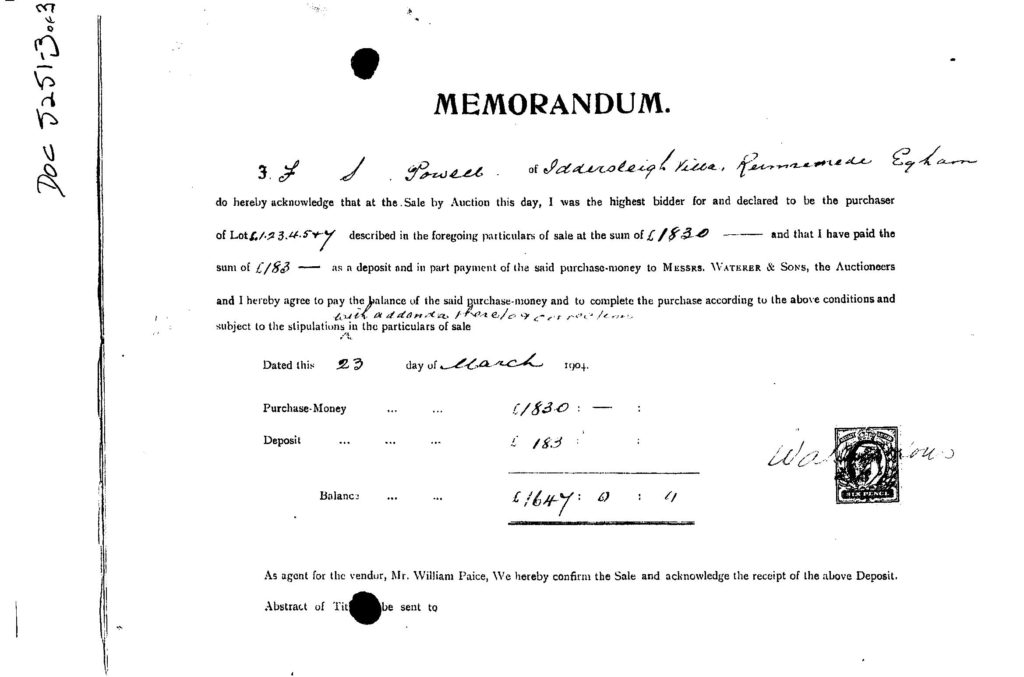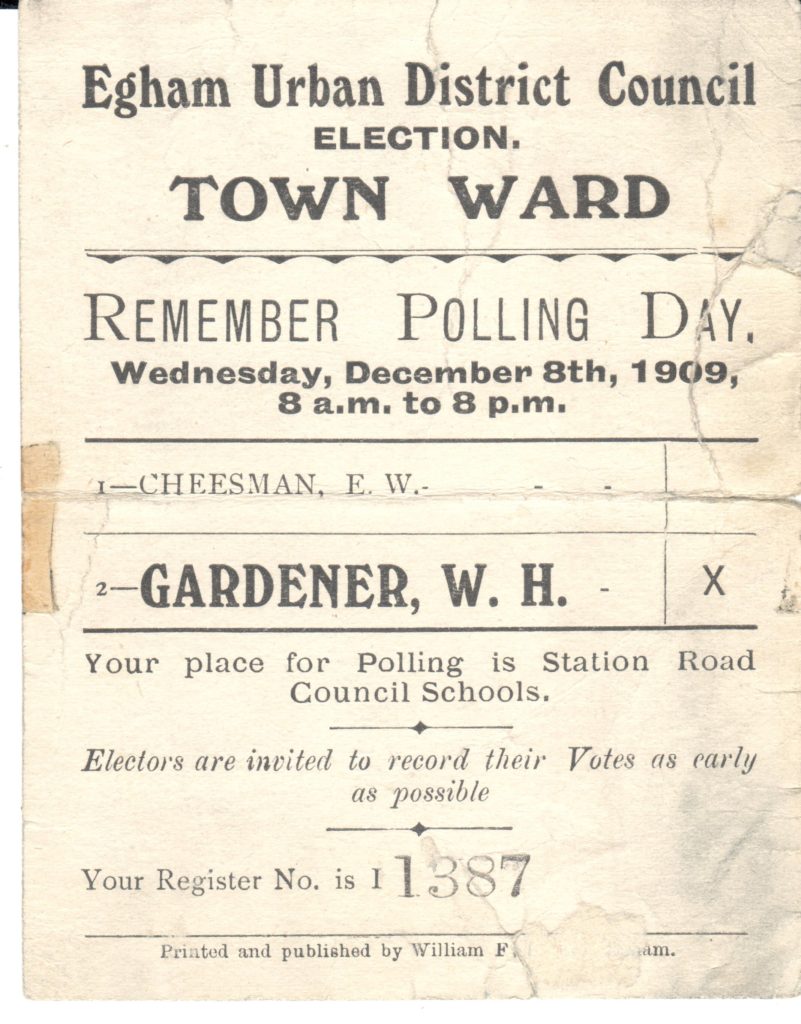Just Williams. What’s in a name?
What inspired me to write a series about men called William?
It began when I was looking at Egham’s pubs for the timeline Lets all go on a pub crawl and I came across William Nash at 23 High Street. He had started out as a basket maker and then proceeded to general store owner, trading from that same address from 1856 to 1911. This looked like an interesting story of Victorian social mobility.
I had just completed my share of work cataloguing the Egham Museum book collection and recalled encountering a local printer, William Larkin of 60 High Street. Perhaps it should be a story of two Williams?
And then there was another name which kept cropping up in various areas of research: William Henry Gardener who had run the country’s first labour exchange at 59 High Street, and whose initials can just be made out on the wall above Timpson’s.
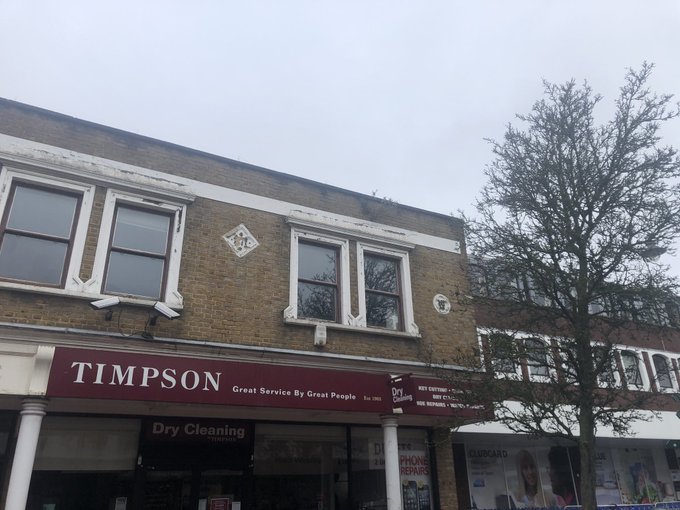
Apart from the name William, what they all had in common were businesses which had thrived for over 50 years. (Another similarity was the tendency to name their sons after themselves – particularly confusing in the case of three generations of William Gardeners living and working in the High Street!)
Suddenly that one article had become a series on the lives of three Victorian tradesmen in Egham, who happened to be called William. I fished around for a snappy title to bind them together and it was my son who suggested, with a nod to Royal Holloway alumna Richmal Crompton, “Just Williams.”
Richmal Crompton, 1890-1969, best remembered for her series of ‘Just William’ children’s books written from 1917 onwards, gained a scholarship to Royal Holloway in 1911 where she supported the campaign for women’s suffrage. She graduated in Classics in 1914.
As I looked up their business addresses, other long-serving Williams came to light from High Street records: William Paice of 168 and 185 High Street, William Whale and William Parsons who both ran the Nurseries at 142 High Street. Then it was time to add another William who I had already been researching at odd moments because of his fascinating electric bell indicators in the Museum collection, William Blenheim of 3 Grange Road.
At first I wondered if they knew each other; perhaps through William Henry Gardener in his other capacity as Registrar of Births Marriages and Deaths – as most of them had large families. Then gradually a tangle of other connections emerged.
William Larkin established his print works next door to the Gardeners. His middle daughter Gertrude married young William Henry Gardener. (Meanwhile his older daughter Lilian married Edward Budgen, establishing a link with another High Street business). The Larkins and the Gardeners both sent their sons to the same school in Cranleigh. Edward Gardener, one of the sons of William Gardener Senior, became a printer and may possibly have worked for William Larkin at No 60 while he was still living in the family home. Edward’s brother George also became a printer after working for many years as ironmonger in Egham.
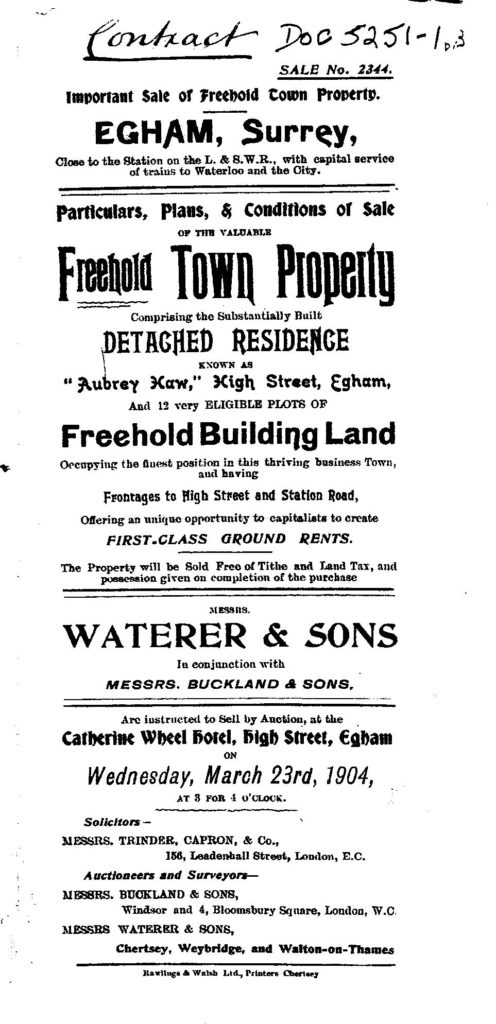
When William Paice sold off his father’s house and grounds, Aubrey Haw, 168 High Street, in 1904, part of the land was bought by Francis Sterling Powell to build six new shops, with electricity installed by the Egham Electric Lighting Syndicate run by William Blenheim’s son Percy and F S Powell’s son, Francis Joseph Powell.
[DOC5251-1]
A meeting of the Rural District Council in 1903 agreed with a proposal from “Messrs Blenheim” to lay a main for electric lighting in the High Street and Station Road. Consent was subsequently given by the County Council – of which William Paice was a member!
Several of the Williams and their families were involved in local politics. George Gardener Junior served on the Rural District Council (RDC) from 1901. When the RDC became the Egham Urban District Council (EUDC) in October 1905, his brother William stood for election in Egham Town Ward and continued until 1916 alongside Francis Sterling Powell (whose son worked with William Blenheim’s son Percy) and later Charles Paice eldest son of William Paice.
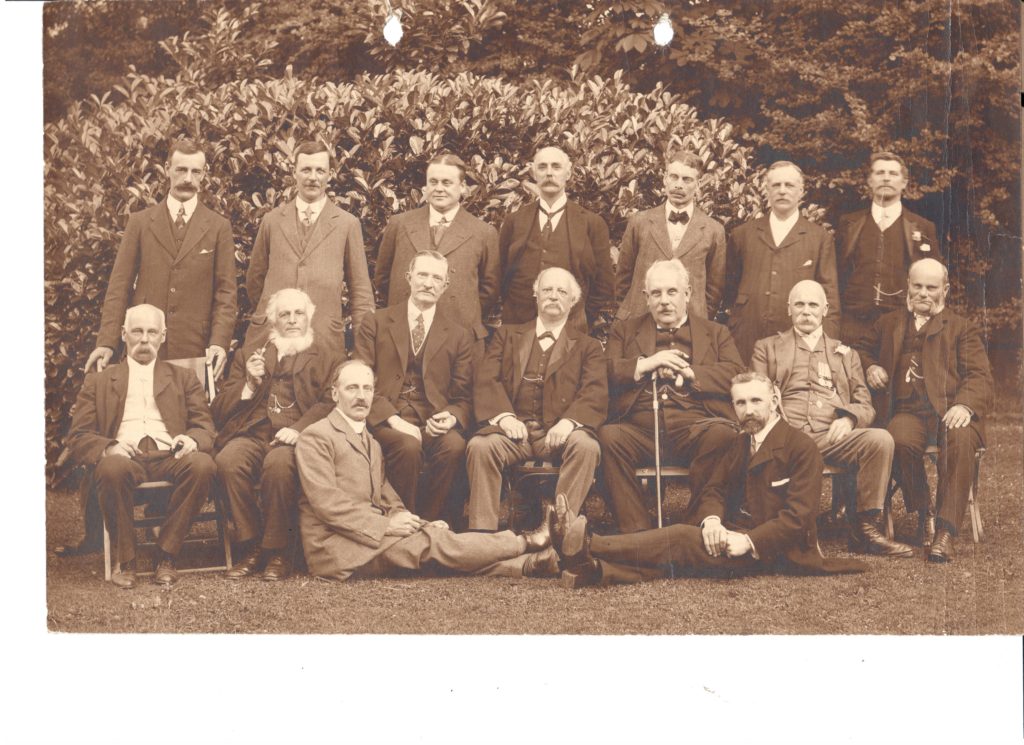
William Larkin undertook printing work for the Council. In fact it was Larkin who published his son in law William Henry Gardener’s election flyers in 1909.
Larkin’s other son in law Edward Budgen was on the EUDC from approx. 1926 to 1947.
William Paice served as a Surrey County Councillor from 1901 to at least 1923: in that capacity he also attended meetings of the EUDC. It was his County Council duties which took William Paice to Strode’s as vice chairman of the Governors from 1903, progressing to chairman from 1915 to the mid-1920s. One of the houses was called Paice after him and his wife was often called upon to present prizes. William Henry Gardener had become a governor by 1915 when the foundation stone of the new school was laid. Until 1947 his brother in law, Edward Budgen, was also a governor appointed by the EUDC. William Blenheim’s son Donald attended Strode’s and was a founder member in 1924 of Strode’s Old Boys Association.
Egham Cricket Club was another local organisation which brought the families together as this photo from 1920-25 shows.

In the end it seems that only William Nash, the first to be investigated, was not in some way connected with the others. Perhaps he was just too busy progressing from basket maker to successful shopkeeper! And that focus on business is after all what has made this group of men named William such a major force in the history of our High Street.

Margaret C Stewart



